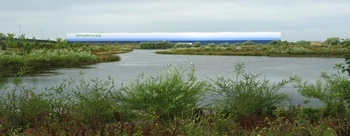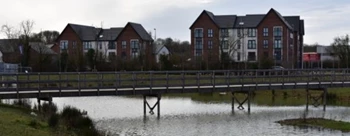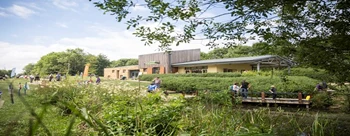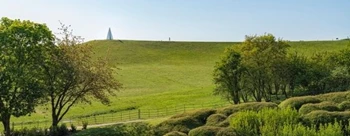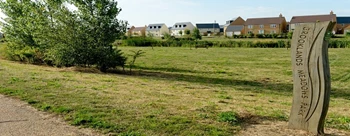Ponds
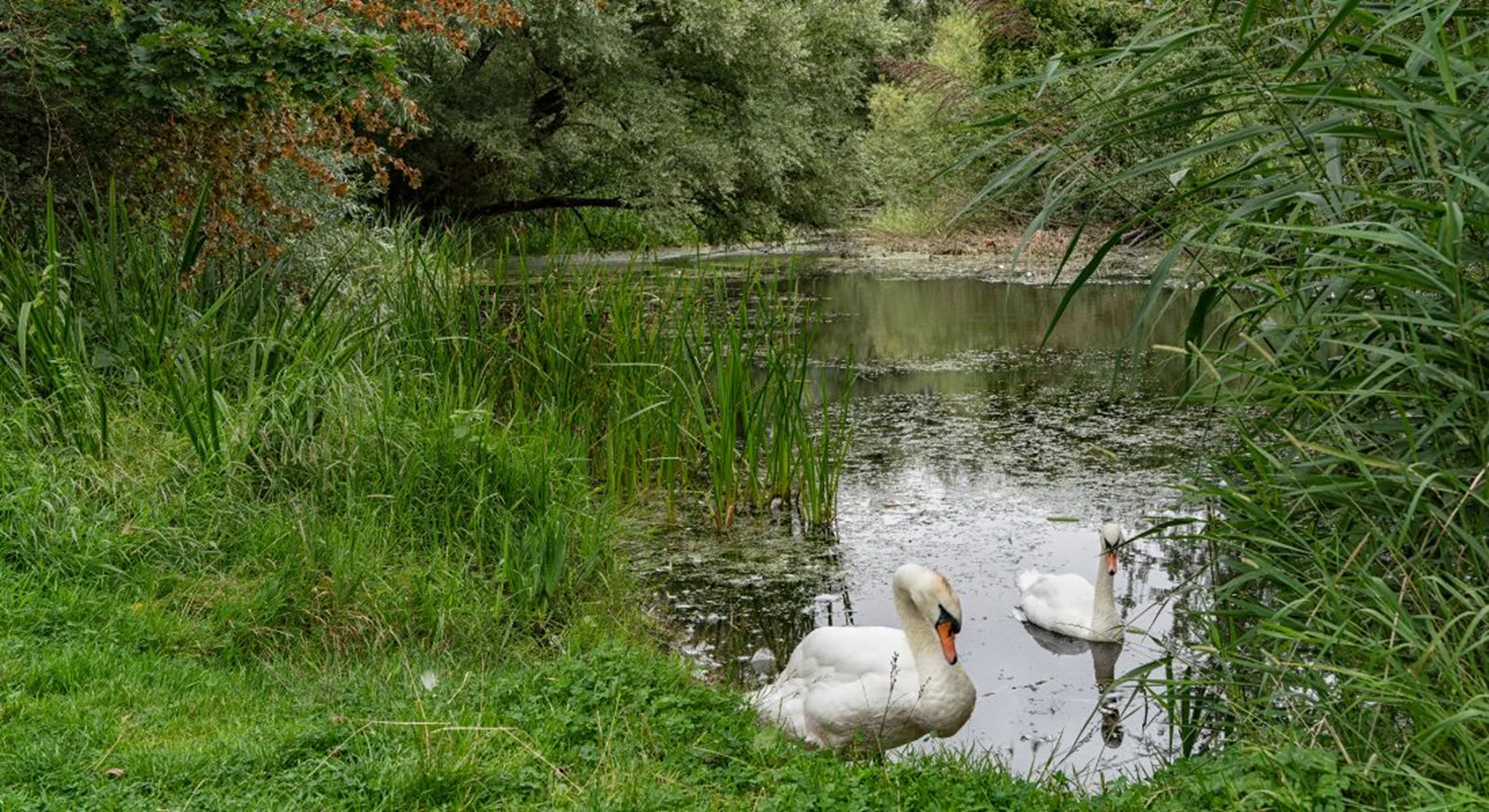
A pond is a relatively small body of fresh still water, either natural or designed. As well as their significant role in supporting wildlife, ponds also serve as reflective and tranquil places for us to enjoy.
Over 130 ponds are flourishing in Milton Keynes under our care and they are important habitats for dragonflies and other wildlife, including the great crested newt, a protected species.
Why are ponds important?
Ponds are one of the single best ways of bringing more wildlife into an area. Whether in open parkland or your garden, ponds provide an essential habitat for plants, invertebrates, fish, birds, amphibians and mammals. Ponds are a key tool in improving biodiversity and range in their size and location. Ponds support similar aquatic plants to lakes and even larger invertebrates!
In the summer months, ponds are alive with insects skimming the surface and plants in full bloom, but as autumn heads into winter, ponds can appear lifeless. In fact, this is the time of year for amphibians to search for damp places to hibernate and ponds and pond edges may provide the ideal location for this. Beneath the surface, snails, cased caddis-fly and other insect larvae will be feeding off the vegetation and decaying organic matter (detritus). All of these are indicators of good water quality and habitat. Several species of water beetle and dragonfly larvae can live up to two years in the water, so throughout the winter our ponds are still teeming with life.
According to The Wildlife Trusts, half a million ponds have been lost over the last 100 years and 1 in 5 remaining ponds are thought to be in poor condition.
How do we care for them?
The Parks Trust landscape is scattered with ponds from natural landforms to the designed ponds that form the Sustainable Urban Drainage Systems (SUDS) running through our linear parks such as Brooklands Meadow Park. Some areas have had ponds built for specific wildlife such as the one designed to support the newt population alongside the V10 Brickhill Street behind the Tree Cathedral.
Other areas have general wildlife ponds to support the ecosystems of the area. One of the ponds at Howe Park Wood has the addition of a dipping platform as it is often used by our Outdoor Learning Team to support their education sessions, helping Milton Keynes residents to understand the importance of caring for our local wildlife. The dipping pond at Howe Park Wood was recently spruced up and surveyed by our team of Youth Rangers. This group of volunteers aged 14-17 worked with Parks Trust staff to remove litter, broken reeds and overgrown vegetation from the surface of the pond, improving the light levels and water quality.
The ornamental drainage ponds in Campbell Park have been restored by our volunteers, improving their habitat conditions for wildlife. The circular and half-moon ponds, located near the public art piece, Chain Reaction, have permanent mammal bridges for the safe exit of hedgehogs, small barley straw bales to reduce the algae growth and newly planted oxygenating plants and water lilies to improve the water quality. These improvements should attract more wildlife including insects and newts so these ponds will now be included in the surveying programme for next year!
The oxygenating plants found within these ponds help absorb any excess nutrients (mainly nitrogen and phosphorus) in the pond on which algae feed, thereby depriving the algae of the nutrients it needs to thrive and helping to reduce and control it.
Here are some examples of oxygenating plants and their benefits:
- Water starwort, Callitriche palustris, an excellent evergreen oxygenator, forms a dense mat of star shaped leaves providing good cover and haven for wildlife early in the season with small white flowers in summer.
- Water-crowfoot, Ranunculus aquatilis, this native oxygenator grows long strands of attractive feathery fronds under water with dainty white flowers appearing above from April to June. This benefits pollinators and the larval stages of insects.
- Water moss, Fontinalis antipyretica, produces oxygen during the day which will benefit all pond life and creates an excellent floating habitat for spawning and invertebrate cover.
- Water lily, Nymphaea alba, the native white lily provides some shade and cover for all wildlife and is a picturesque addition to the ornamental ponds.
In addition, these oxygenators provide shade to help keep the water cooler (algae love warm water which is why it becomes a problem in spring as the water warms up) and provide cover, food and egg-laying sites for amphibians, insects and other pond life.
What can you do to help?
You can try to improve the wildlife habitat in your garden by creating a pond. You can build a pond at any time of year, although you may not attract new wildlife until the next spring. The pond can be as modest or elaborate as you like. It can be as simple as a washing up bowl or old sink, some stones, fresh rainwater and a mammal ladder for ease of escape.
We have created a step-by-step guide to help you build a mini pond in your garden. This is a great activity for families as children will have a chance to create a habitat where wildlife can be monitored.
Let us know what you're doing to help local wildlife on social media by tagging @theparkstrust or using the hashtag #TheParksTrust.




